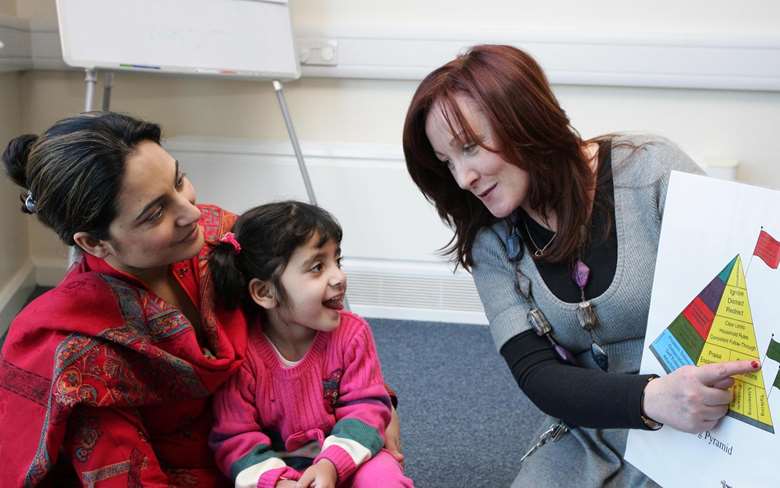Call to identify and support brain-injured children
Neil Puffett
Tuesday, October 30, 2012
All children's services professionals need to be involved in early identification and intervention for children and young people with brain injuries, experts urge

Large numbers of young people in the youth justice system have undiagnosed neurodevelopment conditions. Of 197 young men surveyed in a young offender institution in 2010, 60 per cent reported having previously had some kind of head injury, according to a report by the Transition to Adulthood Alliance.
But although acquired brain injury is associated with a heightened risk of offending, systems to spot and address the issue are largely ad hoc.
Reports by the Office of the Children’s Commissioner for England and the alliance are now calling for urgent improvements to support for this group.
Huw Williams, a professor at Exeter University who contributed to both reports, believes all children’s services professionals need to be involved in early identification and intervention for children and young people with acquired brain injuries.
Basic training
He suggests that all teachers should receive basic training in spotting the symptoms of brain injury, arguing that each school should appoint a school nurse or special educational needs co-ordinator to lead on such assessments. Training should also be provided to professionals working in family intervention projects, social services and primary healthcare settings, he says, while better communication between agencies is vital – such as A&E departments dealing with head injuries in children, schools and children’s social care teams.
Williams believes that early years interventions could be adapted to work with parents of children with acquired brain injury, citing the Incredible Years programme as an example.
“It is particularly good at enabling parents to manage behaviour through a change in parenting style and the way in which the family functions,” he explains. “You need to make sure children are supported effectively to engage with society positively from an early stage.”
But he is worried that such initiatives are facing an uncertain future because of budget cuts in children’s services. “If children have an acquired brain injury, even a minor one, it can have a huge impact on their behaviour,” he says. “Reductions in the quality of resources available now is storing up problems for the future.”
Aside from early intervention, the reports identify the importance of supporting young people when they come to the attention of the youth justice system.
The new Comprehensive Health Assessment Tool, commissioned by the Department of Health and Youth Justice Board, has been available for use in the secure estate since April and is due to be rolled out to youth offending teams from January 2013.
It contains four elements, including a comprehensive assessment of mental health, but a fifth part is being developed, due to emerging evidence on the prevalence of neurodisability in young offenders.
The section will focus on neurodevelopmental disorders, including learning disability, autistic spectrum disorders, communication impairment and traumatic brain injury, and is due to be trialled with a sample of young offenders in custody.
Haphazard approaches
Gareth Jones, chair of the Association of Youth Offending Team Managers, says approaches to brain injuries and neurological conditions are “haphazard” across England and Wales, with some areas displaying “shining examples” of practice, but others lacking resources and expertise.
“Without a standard assessment tool, it is has been down to the individual skills of youth offending teams (YOTs) and their workforces,” he says. “Some YOTs have access to skilled health workers such as psychiatrists and psychologists but others don’t, so diagnosing something as specialist as an acquired brain injury is difficult.
“We are really at the mercy of our local healthcare colleagues and what provision is there. Just trying to get basic healthcare within a YOT is very difficult.”
Jones adds that attitudes towards acquired brain injury and associated neurological conditions need to change, citing the fact that children with behavioural conditions that have been recognised for more than 20 years are still often regarded as “naughty”, rather than having a disorder. But he insists that diagnosed conditions should not be seen as an excuse for offending behaviour. “If we are not careful, we could see no child as responsible, with a diagnosis seen as immunity from prosecution, which isn’t right,” he says.
“We need to make sure the reasons for the offence in the first place are dealt with. It is not a ‘get-out-of-jail-free card’, but how you deal with the young person can be very different.”
Winston Morson, an independent child protection specialist and spokesman for The College of Social Work, says the issue has a relatively low profile among many children’s social care professionals. But he believes an assessment tool to help children’s services staff identify when a young person is suffering the after-effects of a brain injury would be useful.
“In my experience, specific brain injury is probably not an area you would turn to thinking about when it comes to underlying reasons for difficult or challenging behaviour,” he says.
“Because of the complexities, you try to avoid the ‘medical model’ of noticing a probl




